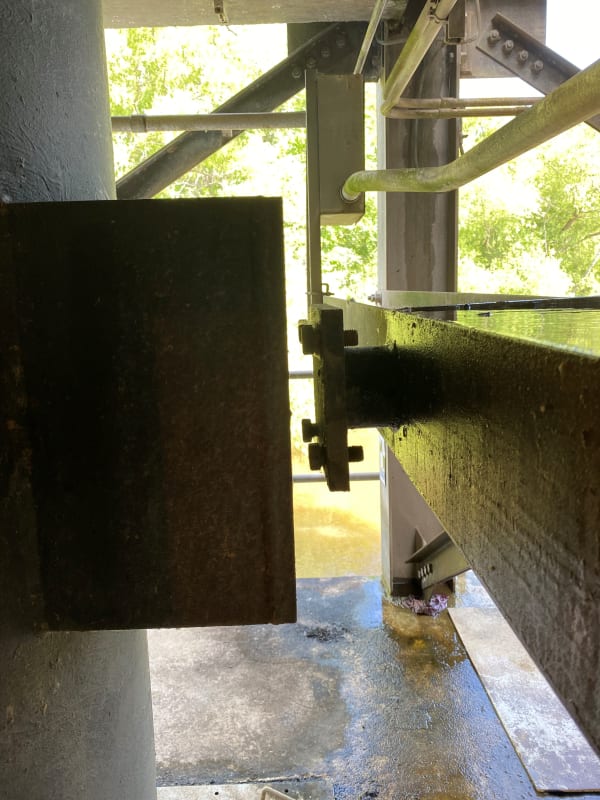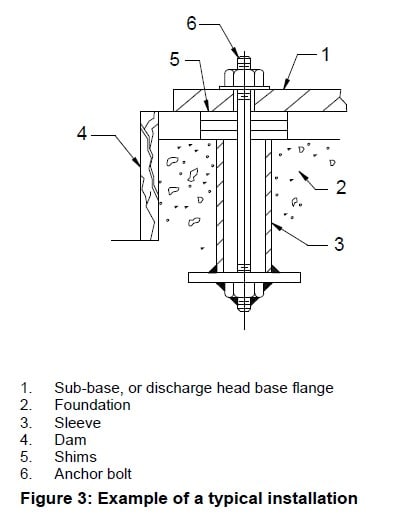Good morning All,
Sorry for the delayed response, I've been away from my laptop for the better part of a week now.
Some updates on these pumps:
[ul]
[li]Most design aspects of this pump, including the base plate, pump stool, brace, etc., are being designed by the manufacturer. Our company is not specifying these design choices, basically just approving the pump curves and dimensions to ensure it fits up to the piping.[/li]
[li]We have asked the manufacturer to also provide loads for the brace that the structural team can use for their design/calcs. We will hear back from them today in a meeting whether they will be able to provide these numbers.[/li]
[li]As far as vibrations are concerned, if it is originating from the pump it will be on the manufacturer or the team installing the pump depending on the cause.[/li]
[/ul]
Finally, the existing pumps have a gap between the brace and the supporting steel as shown below.
I am no expert in this field, have only been a full-time engineer for a little over a year, but I would think this confirms the thinking that if the new brace is the same type as the one shown below that it is for dynamic/vibratory issues and not for any static load. There is an expansion joint at the discharge nozzle as well, could it be some type of safeguard if the tie rods fail and the expansion joint tries to expand from the internal pressure?
I would love to be able to perform a dynamic analysis on this system but it's not within the scope of the project, nor does our office/myself have the technical know-how to perform this type of analysis. Just doing the static analysis and trying to explain how the support stiffness needs to be within a least an order of magnitude for an accurate solution was hard enough. Trying to correctly model the boundary conditions/boundary stiffness's is certainly not within our capacity at the moment.
I couldn't find any information in the pump IOM or online about this type of brace, so I second all those above who asked if anyone else has more information about this design element I would be very interested in learning more about it.
Cleaning up some comments above
This will be a new installation, it does have a bolted flange on the nozzle, and we have double checked the minimum submergence.
The typical installation shown below for mounting on concrete does show shims, but we haven't gotten the specifics from the manufacturer. I will update when/if we get more information.
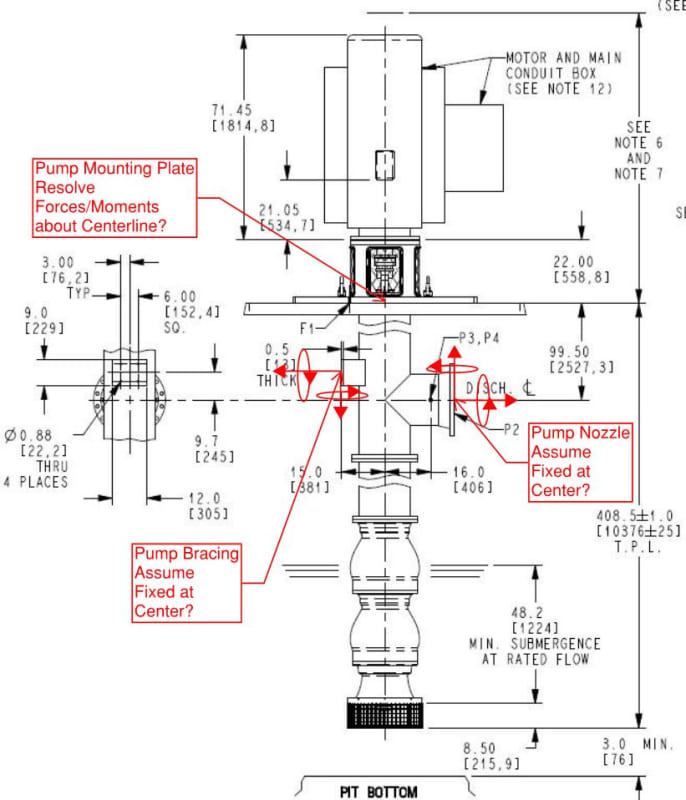


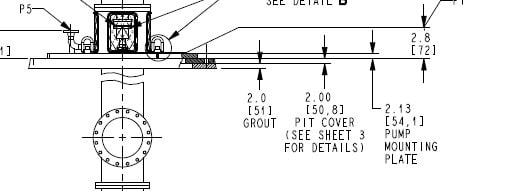
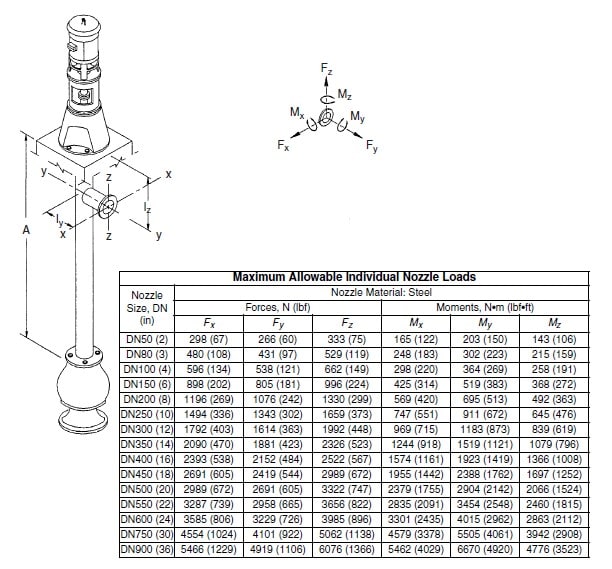

![[bat] [bat] [bat]](/data/assets/smilies/bat.gif)
![[snake] [snake] [snake]](/data/assets/smilies/snake.gif) .
.